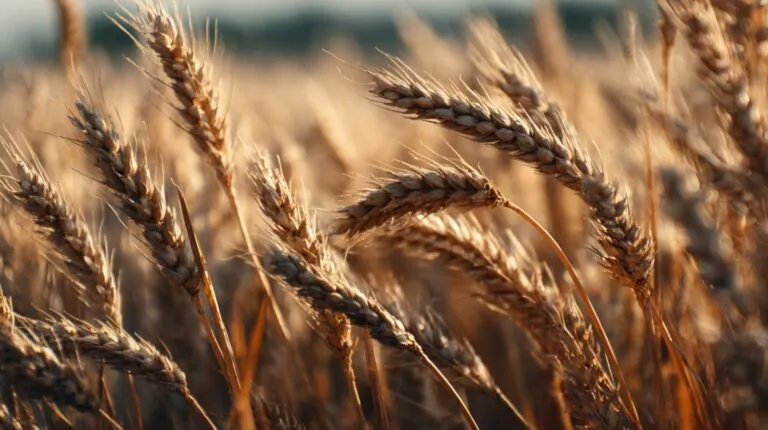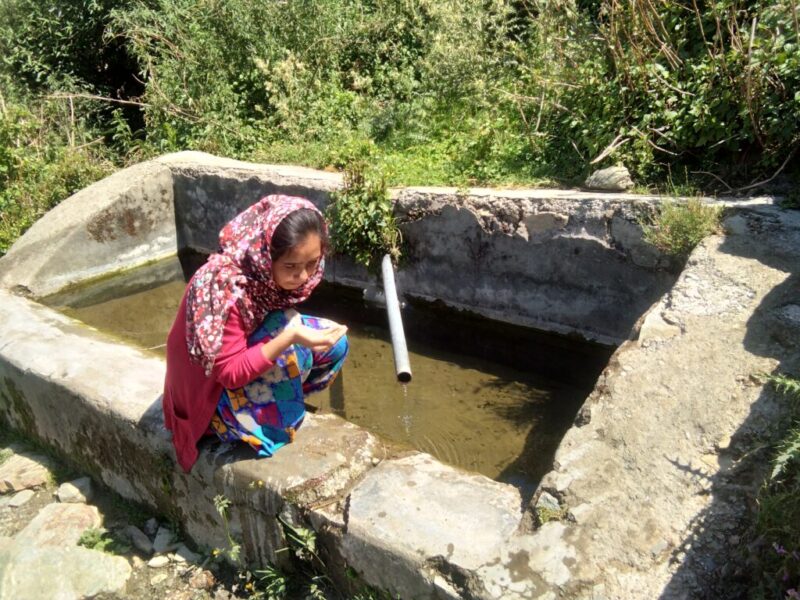In the last 100 years, the planet has experienced two big changes in water management.
One, individuals and communities were steadily handing over their roles to the State, even though there was no government anywhere in the world providing water more than 150 years ago.
Second, the use of simple harvesting and rainwater technologies has declined.
The subjugation of rivers and groundwater through dams and tube wells has become a key source of water. Water in the rivers and aquifers was just a small part of the overall rainwater.
While it is always important to conserve drinking water, it is an especially poignant topic during dry weather and in places where agriculture is the primary economic activity like in India or Malawi1,2.
We all know that water conservation is important because fresh clean water is not only a scarce resource, it is also expensive.
Rural communities often face unique challenges regarding water scarcity, including limited infrastructure, reliance on rain-fed agriculture, and geographical isolation.
Efficient water use can lead to increased agricultural productivity, improved health, and better living standards.
Let us present the top 10 key techniques for agricultural water conservation.
Key Takeaway
- Use Old and New Water-Saving Methods: Both modern tech and traditional practices can help rural communities deal with water shortages.
- Water Conservation is Vital in Rural Areas: Efficient water use in rural places can lead to better health, living conditions, and economic stability.
- Everyone Has a Role: From individuals using water-saving appliances to communities setting up rainwater harvesting systems, everyone can contribute to saving water.
10. Water Your Plants Directly
Drip irrigation is the most efficient way to provide crops with the necessary water and nutrients for optimal growth.
This method delivers water and nutrients directly to the root zone of each plant in precise amounts and at the right time.
As a result, farmers can achieve higher yields while using less water, fertilizer, and energy.
Drip irrigation allows for precise and targeted application of resources, reducing waste and maximizing the efficiency of water and nutrient use in agriculture.
Water conservation is a practice that has been practiced in and about all areas of our country. Rural areas, in urgent need of conservation methods, have acquired new methods / enhanced old traditional methods to meet their crisis of depleting groundwater levels.
9. Save Rain for a Sunny Day
Water harvesting and reuse systems are designed to collect and store runoff and stormwater, which can be used later for various purposes.
These systems have local benefits, such as reducing runoff volume and preventing water quality degradation downstream.
They also contribute to sustainable water management by utilizing collected water for future use, reducing reliance on freshwater sources (naula and dhara – traditional Himalayan water sources)3, and promoting water conservation.
“A dhara comes out of an opening in the mountains and can be seasonal too. Sometimes, tanks are constructed at dharas to collect water,” – Sheeba Sen, founder and CEO of social organization Alaap based in Nainital.
These systems provide multiple benefits, including local water availability, reduced runoff, improved water quality, and enhanced overall water resource management.
#Uttarakhand is known for its traditional water-management practices. Many traditional systems like Naula (little depression aquifer) and Dhara (springs) are still used as important source of drinking water in many hilly areas especially in the Kumaon region.#heritage pic.twitter.com/8UqduIvfpq
— Kundan Kumar, IFS (@kundan_ifs) May 31, 2020
8. Watering on a Timetable
Irrigation system managers use irrigation schedules to determine the appropriate frequency and duration of watering.
Water management takes into account the method of irrigation, as well as the amount, timing, and frequency of water application.
Farmers regularly monitor weather forecasts, soil moisture, and plant conditions to adjust their irrigation schedules accordingly and prevent both under-watering and over-watering of their crops.
Calvin Perry describing #VRI and irrigation scheduling tools during today’s @AGL_UGA visit at @StriplingPark in Camilla GA. @WesleyMPorter @Vellidis_Group @UGA_CollegeofAg pic.twitter.com/HtAFSvB25O
— Stefano Gobbo (@Stefano_Gobbo1) August 22, 2018
This proactive approach helps optimize water use, ensuring that crops receive the right amount of water at the right time for optimal growth while avoiding water waste and potential negative impacts on plant health and productivity.
7. Grow Thirsty Plants
Farmers can enhance their crop productivity per unit of water by cultivating crops that are well-suited to the local climate.
Drought-resistant crops are particularly advantageous, as they can reduce the risk of crop failure during periods of water scarcity, improve overall yields, and enhance economic stability for farmers.
A woman feeds her child with Maheu, which she says is a healthier drink for her family. She is part of smallholder farmers in Masvingo who are getting support from @VSOZimbabwe to grow drought-resistant crops as the country is reeling from the ElNino-induced drought. pic.twitter.com/c5pZuaTR7P
— Lovejoy L-Jay Mtongwiza (@L_JayMut) March 22, 2024
Additionally, these crops can contribute to water conservation efforts, which are vital for sustainable agriculture and environmental preservation.
By growing crops adapted to the local climate and requiring less water, farmers can optimize water use, mitigate risks associated with drought, and promote long-term sustainability in agriculture.
6. Make the Most of Moisture
Dry farming is a method of crop production that does not rely on irrigation during dry seasons, but instead utilizes moisture stored in the soil from the previous rainy season.
It is a location-specific, low-input strategy for growing crops within the constraints of the climate. In this approach, a crop may receive minimal irrigation or none at all.
21 HECTOR’S FARM FOR SALE IN MORABANE.
‐30 Kms from Moleps – 21 hec fenced. – solar powered borehole -2.8Cubic yeild Farm workers house, goat kraal, chicken houses, 5 hec cleared. Am already producing vegetables and I also do dry farming. Price P640,000. DM/CALL:76508414 pic.twitter.com/gK9fQgY4tM — Tumisang_Rego🇧🇼 (@RegoengTumisang) March 21, 2023
This method emphasizes maximizing the natural moisture content of the soil and adapting crop choices and management practices to suit the local climate, to achieve sustainable crop production with minimal water use.
5. Keep the Grass Greener
Rotational grazing involves moving livestock across fields in a planned manner to promote pasture regeneration. Proper grazing management practices enhance the fields’ ability to absorb water and minimize runoff, leading to more drought-resistant pastures.
https://t.co/4Sq6h9BeBt for rotaional grazing #dairytechnology #farming #livestockfarming #rotationalgrazing pic.twitter.com/2WL81JSZ5D
— Pasture.io 🍀 (@pastureio) March 19, 2024
This approach offers water-saving benefits, as it can increase soil organic matter and improve fodder coverage, leading to improved water retention in the soil.
By carefully managing grazing patterns, farmers can optimize pasture water use, improve pasture quality, and enhance drought resilience, ultimately contributing to sustainable livestock management and better water resource utilization.
4. Keep Your Soil Moist and Happy
The combination of compost and mulch can be highly effective in improving soil health and fertility.
Compost is incorporated into the soil before planting, while mulch is applied around plants after they have been established. Both compost and mulch can be produced on-farm, making them a cost-effective technique for farmers to enhance soil quality.
Loose and bagged leaves collected by the Town are composted into leaf mulch, which can be used as a soil additive for composting. This year, leaf mulch compost will be available for pickup at Glade Road Growing on March 30, from 8am-12pm. Register: https://t.co/FMhTFWVngR pic.twitter.com/AkZbsnJcWR
— Town of Blacksburg (@Blacksburg_Gov) March 19, 2024
Compost enriches the soil with organic matter and nutrients, while mulch helps conserve moisture (by slowing evaporation), suppress weeds, and moderate soil temperature.
3. Till Less, Save More Water
Conservation tillage refers to a collection of farming techniques aimed at reducing soil erosion, conserving water, and enhancing soil health. These practices create a protective layer on the soil surface that helps retain moisture, making them particularly beneficial in regions with limited water availability or frequent drought conditions.
By promoting conservation tillage and improving overall farming efficiency, air seeders contribute to the long-term sustainability of agricultural practices. pic.twitter.com/eGkbb6TJJQ
— Dashun Agriculture Machine (@snshwi535022) March 23, 2024
By minimizing or eliminating traditional tillage methods that disturb the soil, conservation tillage helps maintain soil structure and organic matter, reduce water runoff, and prevent erosion.
2. Protect Your Soil
Cover crops play a vital role in protecting bare soil from erosion, water loss, and compaction by providing a protective layer that reduces the impact of wind and water erosion. They also compete with weeds for water and nutrients, helping to control weed growth and potentially reducing the need for herbicides and other chemical inputs.
Cover crops are Power crop to SOIL #SaveSoilForClimateAction@cpsavesoil https://t.co/RkFF6Q7ZvT pic.twitter.com/JOCqh7FFH7
— Balamurugan K (@balamurugank180) February 8, 2024
Cover crops are a form of carbon farming practice that can enhance water preservation and soil health. They are planted between primary crop cycles to protect the soil from erosion, improve soil fertility and water retention, and offer additional benefits such as weed suppression.
1. Organic Farming: Go Natural
Organic farming encompasses a set of farming techniques that prioritize using natural methods and materials to promote soil fertility, reduce reliance on synthetic chemicals, and conserve water.
Hivi karibuni tulifanikiwa kushirikiana kuandaa shamba darasa lijulikanalo kama Her Shamba Farm Tour kwa kushirikiana na @KijanaFactory pamoja na wadau mbalimbali katika kutoa mafunzo ya kilimo kwa vitendo kwa vijana wenye shauku na nia ya kuanza kilimo hai yaani organic farming. pic.twitter.com/tUKkGl2V3I
— Youth Investors Association (@YIA_Tanzania) March 22, 2024
For instance, crop rotation helps to diversify the types of crops grown in a field over time, reducing the risk of nutrient depletion and pest buildup and promoting healthier soils that can retain water better.
Household and Community Water Conservation Tips
There are several easy ways to save water, and they all start with you.4 When you save water, you save money on your utility bills. Here are just a few ways.
| Where | How |
|---|---|
| In The Kitchen |
|
| In The Bathroom |
|
| In The Laundry |
|
| Plumbing and Appliances |
|
| For Outdoor Use |
|
Conclusion
A multitude of technologies are available to conserve water, improve efficiency, and protect water quality in agriculture.
These technologies can help transform agriculture from being a part of the water problem to being a part of the solution.
With continued innovation and collaboration, we can harness the power of technology to ensure the sustainable use of our precious water resources, guaranteeing food security and environmental health for generations to come.
References
- Susan Chimbaza, Ephraim Vunain & Timothy Biswick. (2022). Traditional and Modern Methods of Water Conservation in Malawi. (https://link.springer.com/chapter/10.1007/978-3-031-09663-1_5)
- Sanskriti Agrawal. (2020). Water Conservation Techniques in Rural India. (https://womenforindia.org/wp-content/uploads/2020/11/Water-Conservation-Techniques-in-Rural-India.pdf)
- Deepanwita Gita Niyogi. (2020). Vikalp Sangam. (https://vikalpsangam.org/article/women-revive-traditional-water-sources-in-uttarakhand/)
- Trinity Rural Water Supply Corporation. (https://trwsc.com/conservation-tips)









